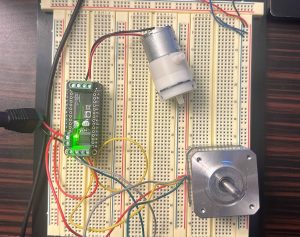This week I worked on parametrizing the normal map computation, and 3D printed components for the manipulator. I made progress on the normal map math, but still need some more work to fully parametrize it. That puts me a little behind schedule, but I gave myself some buffer time in implementing the math in code, which should be very quick as its computed naively per pixel. I had to reprint the manipulator parts a few times due to printer issues, but we now have that component made and handed off to Theo for assembly.
Next week I will finally finish the math, and begin testing the manipulator. I can help characterize rotation accuracy and scan quality with/without a cover. I also already have some code written for the normal map computation with n=4 rotations so we could run a full system test if manipulator testing goes well.
